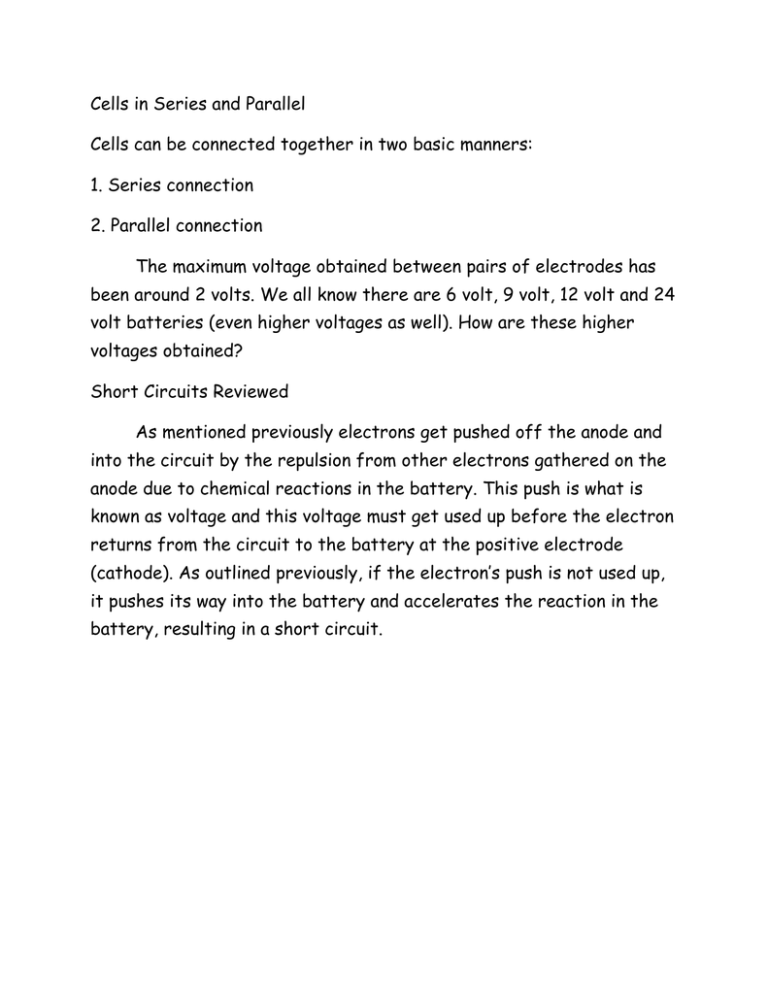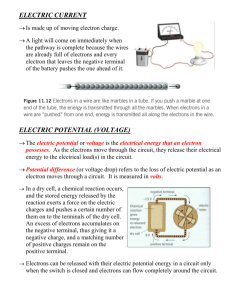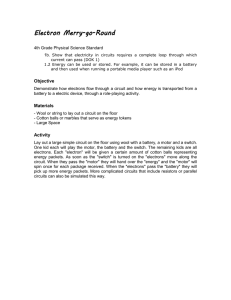Cells in Series and Parallel Cells can be connected together in two
advertisement

Cells in Series and Parallel Cells can be connected together in two basic manners: 1. Series connection 2. Parallel connection The maximum voltage obtained between pairs of electrodes has been around 2 volts. We all know there are 6 volt, 9 volt, 12 volt and 24 volt batteries (even higher voltages as well). How are these higher voltages obtained? Short Circuits Reviewed As mentioned previously electrons get pushed off the anode and into the circuit by the repulsion from other electrons gathered on the anode due to chemical reactions in the battery. This push is what is known as voltage and this voltage must get used up before the electron returns from the circuit to the battery at the positive electrode (cathode). As outlined previously, if the electron’s push is not used up, it pushes its way into the battery and accelerates the reaction in the battery, resulting in a short circuit. Series circuits give electrons two or more pushes by allowing an electron, pushed out of a cell, to pass directly into another cell where it gets another push. This way, voltages higher than 2 volts can be obtained. Ö Ö 2 Cells in Series: an electron gets a push into the circuit from the cell directly into another cell where it gets another push Cells Connected in Parallel A cell connected in parallel with another cell pushes its electrons out in the same fashion as it did when connected alone in a simple circuit except it does not push as many electrons out in the same period of time. Each battery pushes its electrons with 9 volts of push so the current remains as it was with 1 battery but it is now shared between 2 batteries. This light burns 2 times longer than a single battery circuit as a result.




